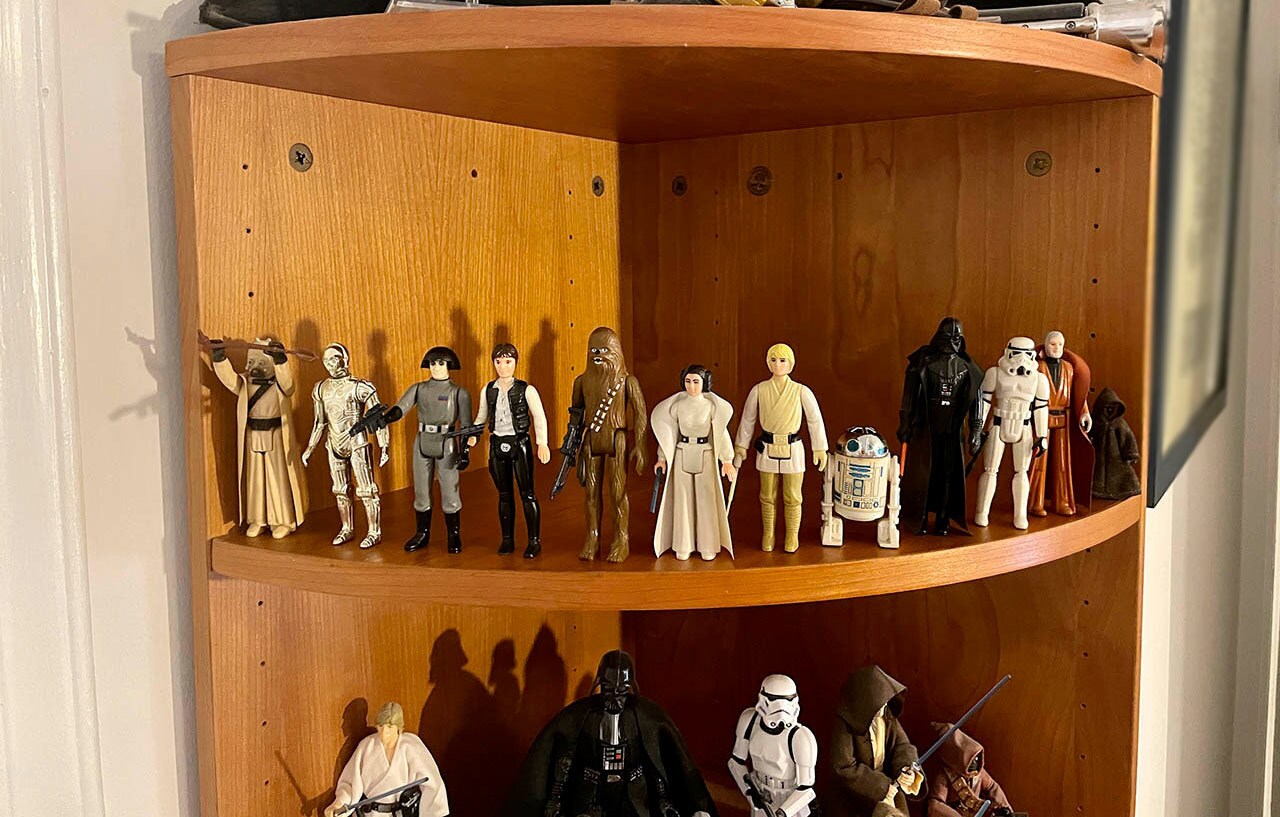This was 1978, and Kenner had only made 12 figures -- Luke, Leia, Han, Chewie, Obi-Wan, C-3PO, R2-D2, Darth Vader, Stormtrooper, Death Squad Commander, Tusken Raider, and Jawa. That decision was how I learned about sales tax (the price tag at the toy store said $1.99 but you needed $2.13 at the register) and to budget. It also super-charged my impulse to not only collect but also be a completist: These days I collect not just action figures but also baseball cards, music, and books.
But collecting figures also super-charged my interest in Star Wars and storytelling. I’d fallen in love with George Lucas’ movie the previous summer, but back then the saga only consisted of one film and a monthly Marvel comic book. I turned to my action figures to invent the new stories I craved, but I had to start small: I only had enough allowance money to buy two.
So which two should I buy?
The obvious answer was Luke and Vader, but some precocious instinct told me that those two characters meeting was the climax of a good story, not its beginning. So I followed Lucas’ lead and bought C-3PO and R2-D2, who spent a few weeks wandering and bickering until I’d saved up enough money to get Luke.
Luke’s arrival opened up new possibilities, but I didn’t have any villains. So my new trio spent lots of time exploring planets made of LEGO and couch cushions in search of Jedi secrets. Next I got a stormtrooper, finally giving my stories an antagonist. And on I went from there, until there were three Star Wars movies and I had amassed an army of figures, vehicles, playsets, and accessories.
When Hasbro created a new line of Star Wars figures in 1995, I was in my twenties but had to have them. I was thrilled when Hasbro made figures they’d skipped when I was a kid, such as Grand Moff Tarkin and a rebel fleet trooper, and even happier when they started making figures that looked like miniature replicas of the characters, with articulation I’d never dreamed of in 1978 and screen-accurate costumes and accessories.
I sold most of my classic figures years ago (to a fellow collector I knew would cherish them), but I still have the original Kenner 12, displayed alongside their modern incarnations and their equivalents in the 6-inch Black Series line. Meanwhile, my huge modern collection fills stacks of storage containers, with a selection of favorites displayed on shelves in my home office.
Each Star Wars movie gets a shelf, on which I arrange the major characters in appearance order. (I don’t have enough shelves for all 11 movies, so I switch around -- right now I’m showcasing the original and sequel trilogies, Solo: A Star Wars Story and Rogue One: A Star Wars Story.) Looking at a movie’s shelf reminds me of its story. That delivers a bit of nostalgia, but it also offers my storytelling muscles a workout.
And as in 1978, action figures help energize my own storytelling. If I get stuck, I let my eyes linger on the Range Trooper from Solo, a buffalo hunter reimagined as an Imperial soldier; or study the contrast between stolid Baze Malbus and agile Chirrut Îmwe from Rogue One; or ponder the way Kylo Ren’s black outfit from The Last Jedi evokes both Vader and Luke. That gets me thinking about costumes and influences and about characters and their arcs, and soon I’m on my way again.
I’ve drawn on that inspiration for years: Before Star Wars: The Force Awakens, Lucasfilm asked me to write Star Wars: The Weapon of a Jedi, and I found myself grinning when my editor walked me through the basic plot he wanted. You see, it was about Luke and the droids searching a jungle planet for a lost Jedi temple. Could I write that story? Absolutely -- in fact, I’d written it nearly every day back in 1978, using three Kenner action figures and my imagination. Which was all I’d needed.


















